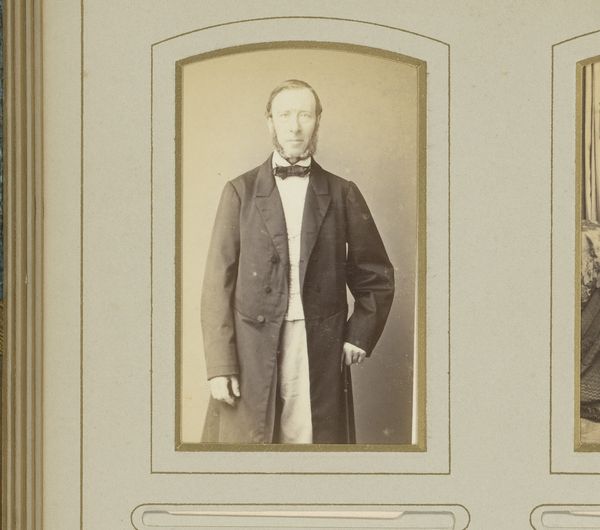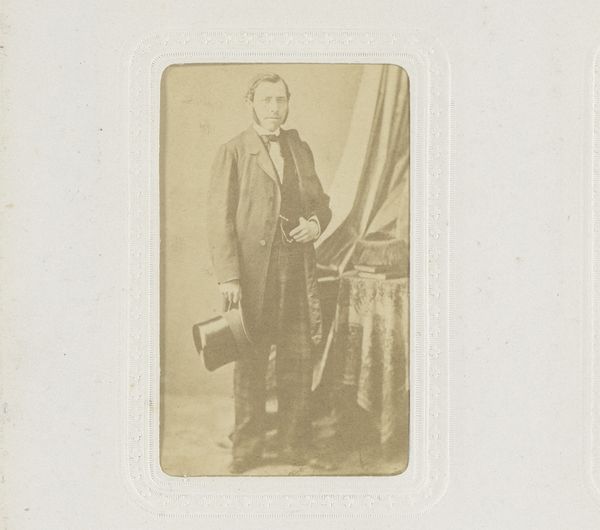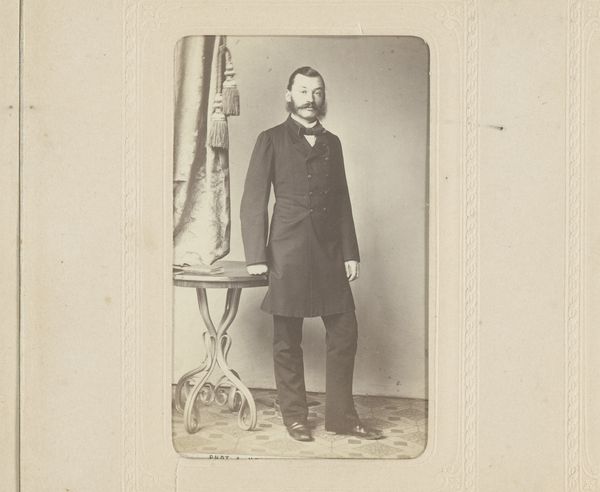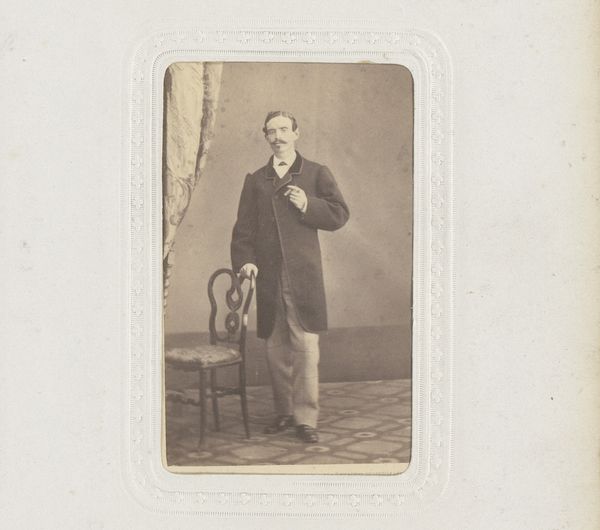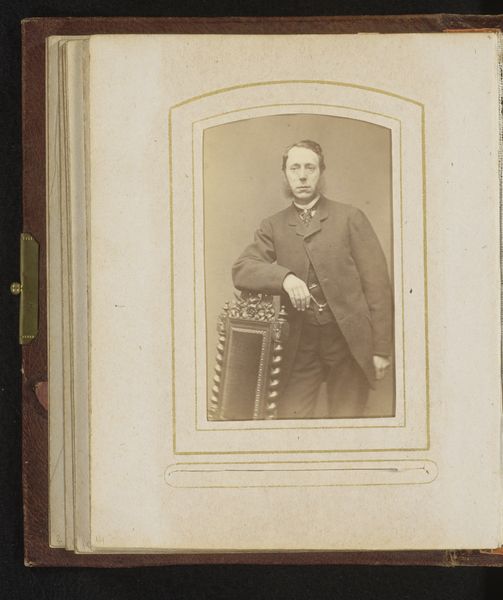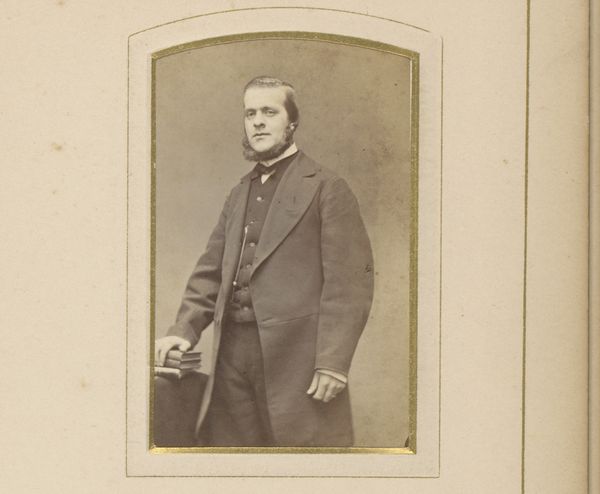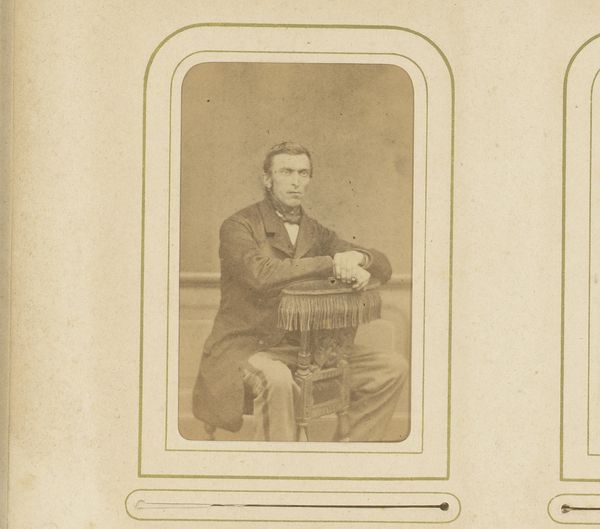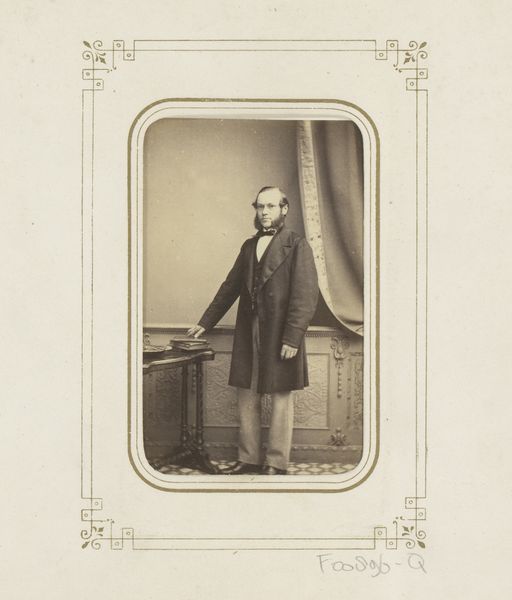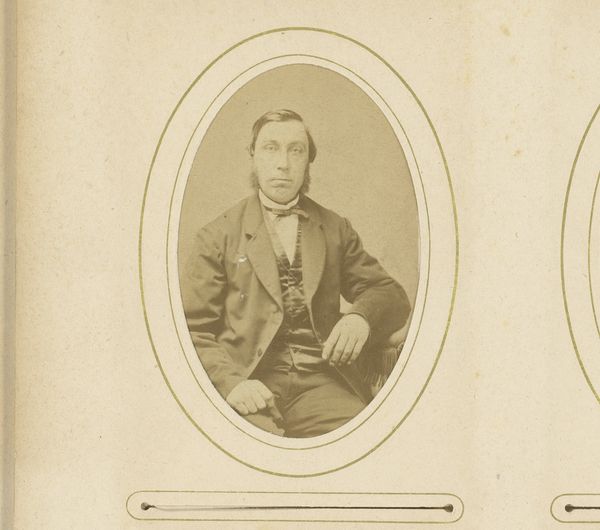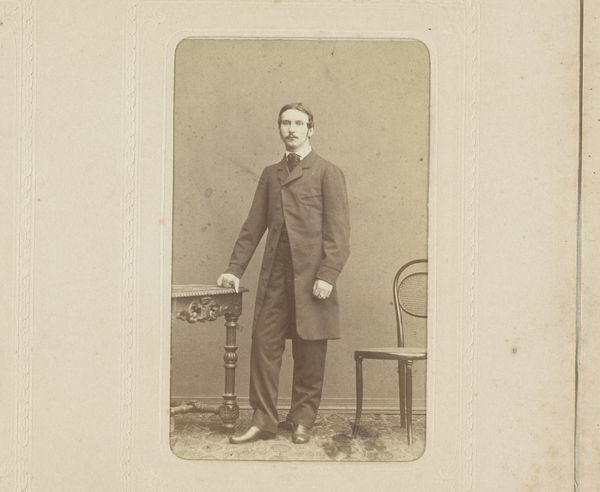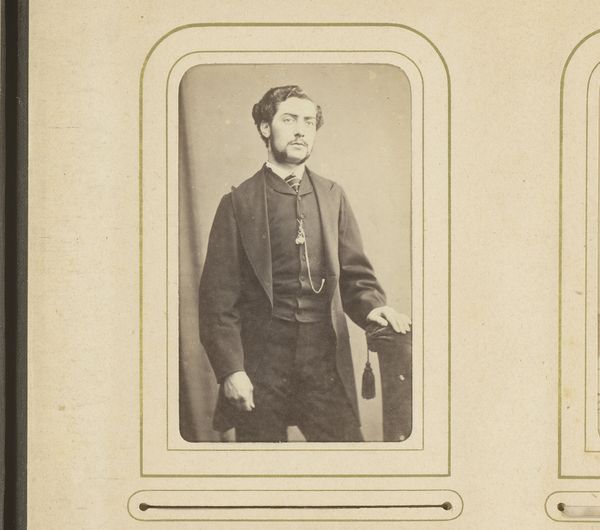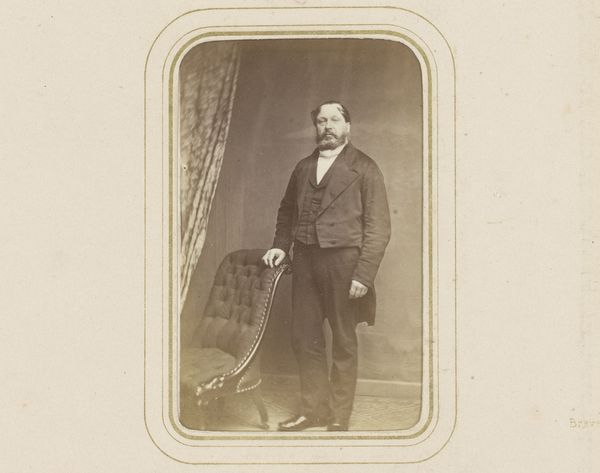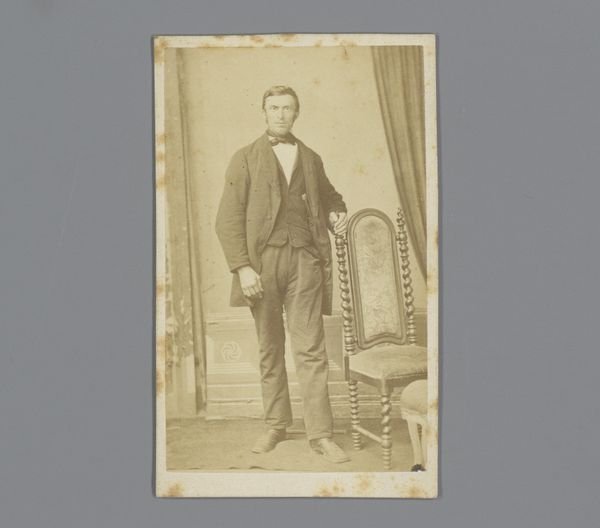
photography
#
portrait
#
photography
#
historical photography
#
19th century
#
genre-painting
#
watercolor
Dimensions: height 82 mm, width 50 mm
Copyright: Rijks Museum: Open Domain
Editor: Here we have what’s believed to be a photograph from 1864, "Portret van een staande man, aangeduid als Verheul," or Portrait of a standing man, identified as Verheul by Hector de Saedeler. It’s quite formal and subdued. I am immediately drawn to the tonal range and how this renders his posture. How would you interpret this portrait? Curator: Observe how the photographer orchestrates the interplay between light and shadow to sculpt the figure. The limited palette emphasizes the materiality of the garments—the textures of the suit versus the crispness of the shirt. Consider the semiotics of the composition itself: the man leans casually, yes, but he is anchored to a table stacked with books and partially draped. What is conveyed by this positioning? Editor: Perhaps to underscore intellect or status. I also see the sharp lines of the table contrasted against the gentle curves of the drape, giving a visual tension. But doesn't focusing solely on those elements overlook the fact that it is, after all, a portrait of a person? Curator: The 'person' is a series of formal choices, an arrangement of shapes, forms, and tones deployed by the artist to communicate certain ideals. How does the composition of the subject, situated adjacent the objects on the table contribute to an understanding? The way the figure interacts with the table is carefully constructed to convey particular narratives without the need of symbolic codes, per se. Editor: I see. So the details in and of themselves are less important than their formal relationship? Even that slight touch, of his hand just grazing the table seems carefully calculated? Curator: Precisely. The intention lies in the relationships between all the components and the ability to evoke meaning. Editor: Thank you, seeing it broken down this way highlights the subtle arrangements I missed previously. Curator: A rewarding analysis of form can give rise to a more complete comprehension.
Comments
No comments
Be the first to comment and join the conversation on the ultimate creative platform.
